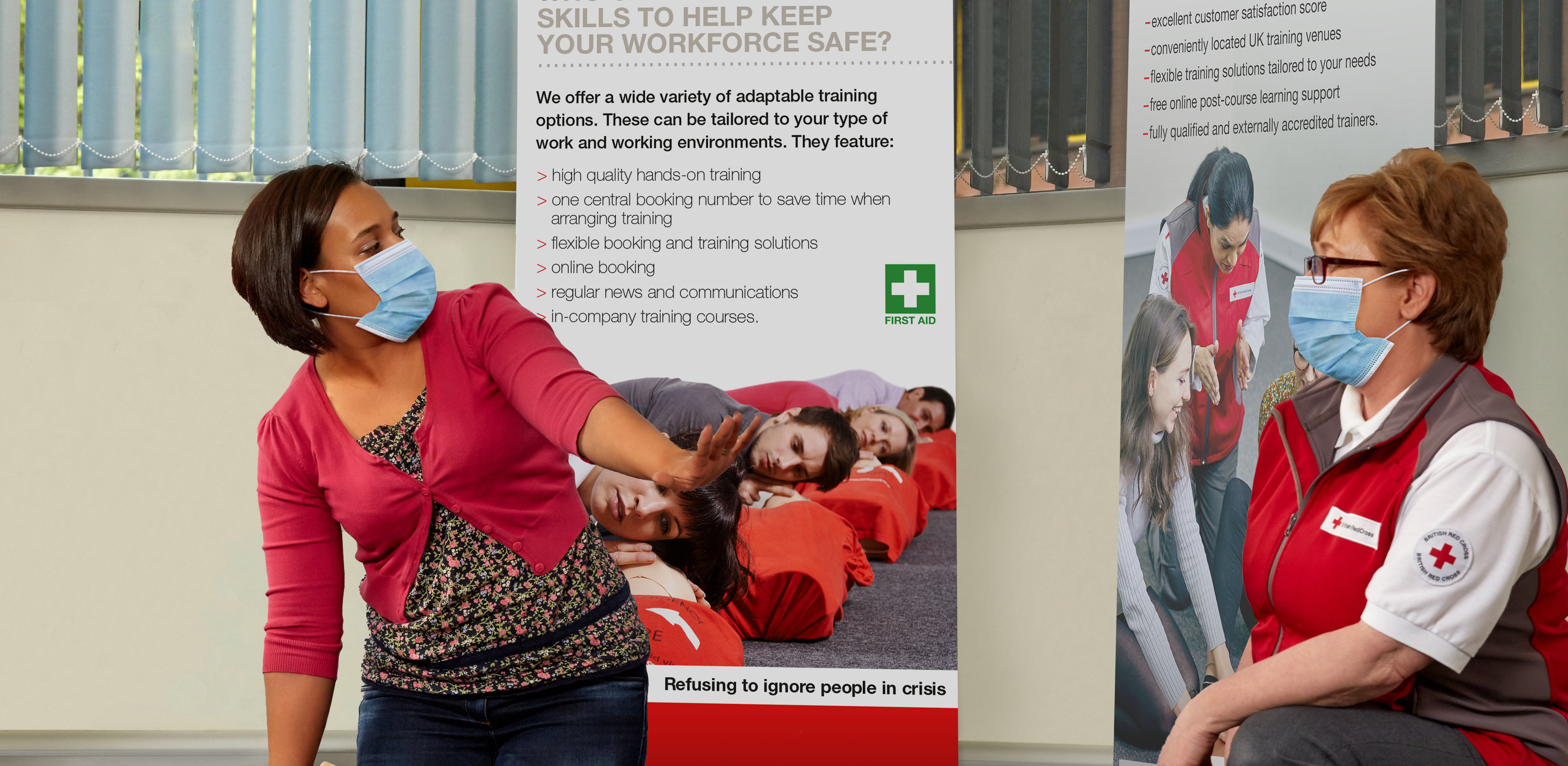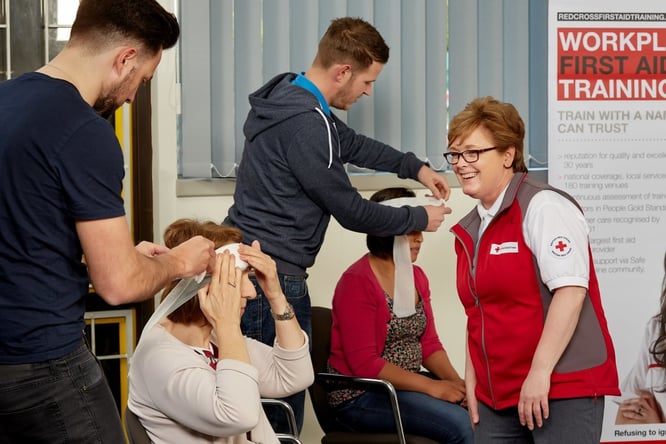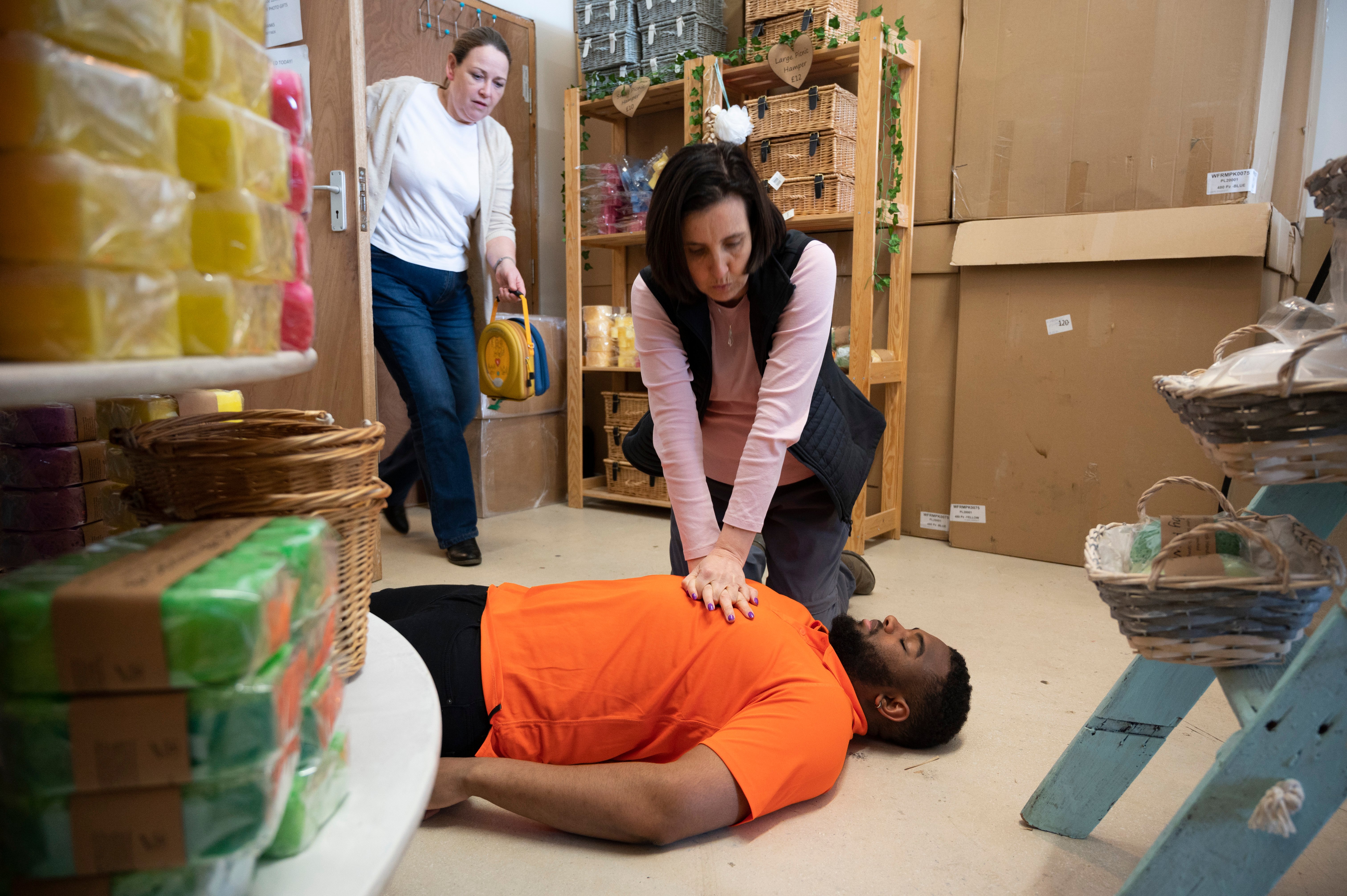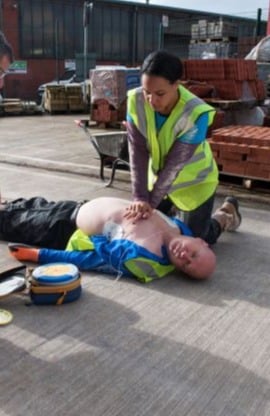One of the most common questions we’re asked by employers is how many first aiders are required for a workplace.
Answering this question is often challenging. Although the Health and Safety Executive (HSE) provides guidelines on the recommended number of first aid personnel based on workplace types and sizes, each company is unique.
That's why regularly conducting a first aid needs assessment is crucial. It enables you to consider various factors, including the size of your business, specific risks associated with your activities, and the characteristics of the sites you operate from.
While we can’t give you a definitive answer on how many first aiders are required for your workplace, we can help you work it out. In this blog, we’ll talk through the different things you’ll need to consider before identifying and training the right number of first aid personnel.
Complete first aid training with a name you can trust
Use our first aid at work course finder to quickly find a suitable first aid training course that will ensure you meet your legal obligations.
Types of first aid personnel - a jargon buster
Before we start, it would be helpful to quickly define the three main types of first aid personnel you may need in your workplace. They are:
Appointed person - An appointed person is someone who’s in charge of first aid arrangements. They take care of first aid equipment and facilities, and are responsible for calling the emergency services if needed. They do not need to be a trained first aider, but for added safety we would recommend that they are. Our half day first aid for appointed persons training course equips people with basic practical skills that could be invaluable in an emergency.
EFAW trained first aider - This is someone who has completed an Emergency First Aid at Work (EFAW) training course. EFAW is a Level 2 qualification that’s normally completed over one day. The course covers a wide range of skills that first aiders need if someone is injured or becomes unwell at work.
FAW trained first aider - People who are First Aid at Work Level 3 (FAW). Due to its complexity, this course is usually over three days and includes a much wider range of first aid skills and techniques, meaning people are able to deliver effective first aid in a wider set of circumstances.
It’s also worth knowing that there are also specialist first aid courses available, such as Paediatric First Aid. You could also consider training your personnel with specific skills that were identified in your first aid needs assessment.

Low-risk businesses: legal requirement for first aiders
To determine the number of first aiders needed in your workplace, the HSE's suggested guidelines serve as a good starting point. However, it is only a guide, so it is important you don’t use these without ensuring a full assessment of your workplace's specific hazards and level of risk.
Conducting a thorough first aid needs assessment is essential for determining the required number of first aiders and identifying the appropriate first aid equipment available on-site.
A needs assessment is important because it helps to ensure you are not underestimating workplace hazards and risks. According to HSE guidance, businesses like offices or shops are generally considered low-risk, but this depends on specific activities.
For instance, a shoe repair business in a small shop may pose higher risks due to the use of machinery for repair and key cutting. Similarly, office workers using equipment like guillotines, knives, or industrial staplers may require a higher level of first aid provision and personnel, as determined by your needs assessment.
Assuming that your assessment has determined that your business is low-hazard, the minimum recommended numbers of first aid personnel are:
|
No of employees |
Number of first aid personnel (minimum) |
|
Fewer than 25 |
1 appointed person |
|
25 to 50 |
1 EFAW trained first aider |
|
50+ |
1 FAW trained first aider per 100 people |
These numbers may seem low, but this is because they are designed only to cover the lowest risk environment. Yet even among low-risk workplaces there is a lot of variation.
In low-risk businesses, the risk grows as the number of people increases, leading to a higher chance of injury or illness.
When you have more than 50 people, it becomes necessary to have first aiders with level 3 FAW qualifications. It is worth considering training individuals to this standard, even if you have a smaller workforce as having more first aiders with higher qualifications often enhances the safety of the workplace environment.
Take the first steps to make safety a priority
Explore our course finder to identify the appropriate first aid training for your business.
Medium to higher-risk businesses: legal requirement for first aiders
As you’d expect, the HSE recommends higher numbers of first aid personnel for more hazardous workplaces. Examples of these might include businesses in the forestry, agriculture, construction, catering or engineering sectors, and certainly, those where employees handle chemicals or use machinery.
For these employers, the recommended numbers of first aid personnel are outlined below.
|
No of employees |
Number of first aid personnel (minimum) |
|
Fewer than 5 |
1 appointed person |
|
5 to 50 |
1 EFAW trained first aider or 1 FAW trained first aider, depending on the types of injuries that may occur |
|
50+ |
1 FAW trained first aider per 50 people |
The message here is clear. The more hazards there are, the more likely accidents are likely to happen.
Also, the more personnel you have, the higher the chance that someone will suffer an emergency such as anaphylaxis or a heart attack. In both cases, it’s wise to exceed requirements by having extra people with FAW training.
It’s also important to remember that a 3-day first aid at work course isn't a perfect solution for every workplace, and you may need to look at specialist training if you identify a specific risk such as working with some chemicals.

When will minimum first aider provision not be enough?
While the HSE recommended numbers are helpful, you need to balance them against a range of factors during your first aid needs assessment.
We’ve written a detailed article on how to conduct a first aid needs assessment, but some of the most important things you need to consider are:
The number and layout of sites
Do you have enough first aiders on each site? Where do first aiders work, and can at least one reach any part of the workplace quickly in an emergency?
Different activities
Do different activities take place in the workplace? For example, if there’s a factory with offices attached, you’ll almost certainly need more first aiders in the factory. (You should also do a separate needs assessment for both).
Previous accidents and illnesses
If specific types of accidents or illnesses have occurred in the past, do you have enough first aiders with the right training to help if they occurred in the future? Similarly, if there are staff who have made you aware of specific health needs or disabilities, ensure your first aiders are able to deal with these.
First aid equipment
As a minimum you will need enough suitably stocked first aid boxes for your workforce. Ideally these should meet British Standard BS 8599-1, but may need additional items suited to the types of hazards you’ve identified in the workplace. If you have specialised first aid equipment such a defibrillator, make sure you have enough first aiders who are trained to use it.
Potential for specific injuries
If you identify specific types of injury or illness you could encounter in your workplace, such as burns, scalds, falls or poisoning, ensure you have first aiders with adequate training and appropriate equipment to help.
Proximity to emergency services
If your workplace is a significant distance from the emergency services, it’s wise to have additional first aiders, who may even require more specialist training. It’s also a good idea to let emergency services know in advance of any specific or unusual hazards your staff may be exposed to.
Visitors
You’re not obliged to have first aid provision for visitors, but it’s sensible to make sure you have. If you often have children visiting your site, you may wish to ensure some of your staff have paediatric first aid training.
Easily find appropriate first aid training for your business
Use our course finder tool today to take the first steps to safeguard your team and business.
Sufficient first aiders are required at all times
After determining the required number of first aid personnel, it is important to ensure you have the right first aiders in the workplace at all operating times. This includes considering factors such as shift work, out-of-hours operations, and instances when first aiders may be on leave or absent due to illness.
By considering your provision in advance, along with how many first aiders are required for your workplace, you can guarantee continuous coverage and availability of first aid support and not compromise the health and safety of employees.
How can I train my first aiders?
As an employer, you need to make sure that your first aiders have adequate training. The HSE no longer ‘approves’ training providers, so it’s best to choose a reputable and experienced training provider able to deliver quality courses across the UK.
At the British Red Cross, we offer thorough and rewarding FAW and EFAW training that can be tailored to the needs of your business. Just as importantly, we offer annual first aid skills updates (refresher courses) to help ensure your first aiders’ skills are kept up to date. Get in touch today to learn more.
Topics: First Aid






